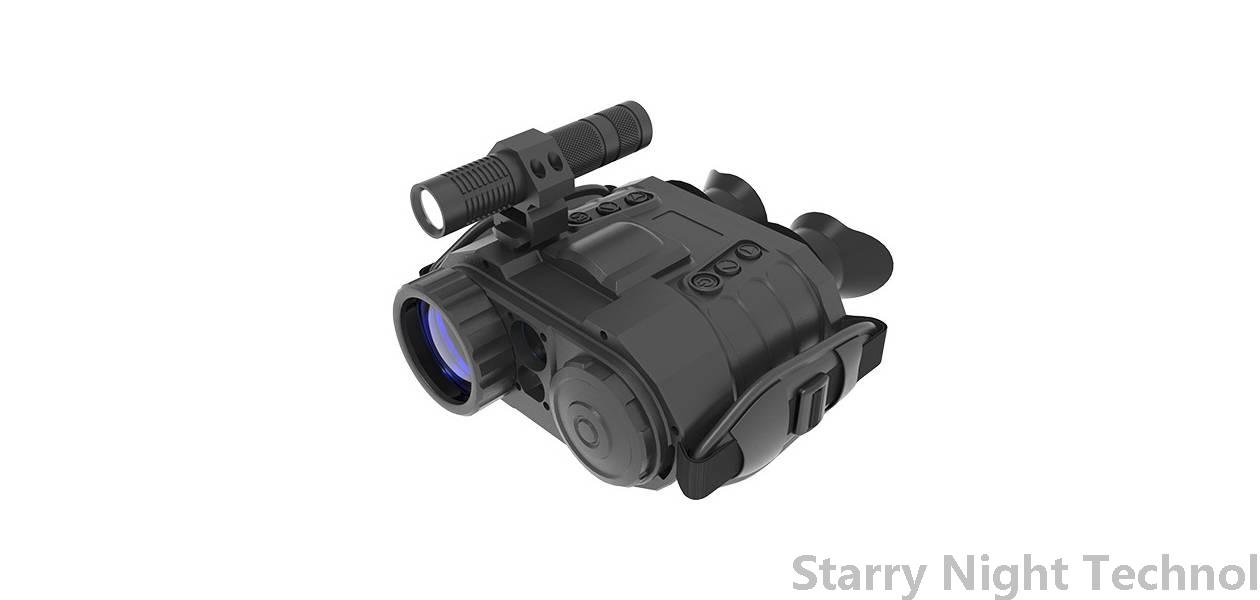Night Vision Technology: Breakthroughs in Military, Medical, and More arenas
1728543631000

Night vision technology has progressed remarkably over the last few decades, transitioning from its primary military application to various civilian uses that include medical, security, and even recreational fields. This article explores the groundbreaking advancements in night vision technology, examining its significance in diverse arenas and the implications for the future.
#### A Brief History of Night Vision Technology
The development of night vision technology dates back to World War II when the German military utilized early infrared devices for tactical advantages in combat. The post-war era saw further refinement, particularly within the American military, catalyzed by advancements in optics and electronics. The introduction of image intensification technology in the 1960s led to the production of the first commercially available night vision goggles. Rapid military advancements propelled the technology into new levels of performance, paving the way for widespread applications.
#### Military Applications
The military remains the leading force behind the advancement of night vision technology. High-tech devices such as goggles, monoculars, and weapon sights are designed to provide soldiers with superior awareness in low-light conditions. These systems utilize image intensification or thermal imaging to enhance visibility, allowing for operations during nighttime or in obscured environments.
Modern systems like the AN/PVS-31 utilize a combination of image intensification, augmented reality, and digital functionalities that improve situational awareness. These devices allow for target identification and location, reducing the risk of friendly fire, and enhancing mission success rates. By integrating micro-displays with augmented reality applications, soldiers can receive real-time intelligence and data overlays, giving them an unprecedented advantage on the battlefield.
#### Expanding into Medical Applications
In recent years, night vision technology has made significant inroads into the medical field. One of its most promising applications is in surgery. Low-light environments can pose challenges in operating rooms, especially in complex procedures where precision is essential.
Innovations such as infrared and near-infrared imaging techniques are being employed to enhance surgical visibility. For instance, near-infrared fluorescence imaging can show blood flow and highlight cancerous tissues during surgery, allowing for more precise tumor removal while preserving nearby healthy tissue. This technology enhances surgeons' ability to perform minimally invasive procedures, reducing recovery times and improving patient outcomes.
Furthermore, in emergency medicine, night vision tools are being integrated into ambulances and hospitals, assisting paramedics and doctors in assessing patients in poorly lit settings. These tools are critical during nighttime emergencies or in situations where visibility is compromised.
 Beyond military and medical applications, night vision technology has found a valuable niche in security and surveillance. Law enforcement agencies and security firms utilize enhanced night vision systems to monitor areas for criminal activity during the night. Thermal imaging cameras have proven effective in detecting intruders, identifying heat signatures, and tracking movement, irrespective of the lighting conditions.
Beyond military and medical applications, night vision technology has found a valuable niche in security and surveillance. Law enforcement agencies and security firms utilize enhanced night vision systems to monitor areas for criminal activity during the night. Thermal imaging cameras have proven effective in detecting intruders, identifying heat signatures, and tracking movement, irrespective of the lighting conditions.Cities worldwide are incorporating night vision cameras in public spaces to boost surveillance and security. With crime rates fluctuating, ensuring public safety remains a priority. Night vision technology bridges gaps in visibility, demonstrating its potential to act as a deterrent and an aid in responding swiftly to criminal activities.
#### Recreational Use and Wildlife Observation
As night vision technology becomes increasingly accessible, it finds new avenues in recreational activities. Birdwatchers, wildlife enthusiasts, and campers utilize night vision goggles and monoculars to observe nocturnal species without disturbing them. These devices allow enthusiasts to experience nature from a different perspective and appreciate wildlife behavior that would otherwise remain hidden from view.
Night hunting has also gained popularity among sports enthusiasts. Advanced night vision scopes provide hunters with the ability to track prey in complete darkness, adhering to local regulations and ethical hunting practices. As the demand for such technology grows, manufacturers are innovating to develop rugged, lightweight, and affordable options catering to recreational users.
#### Future Trends and Challenges
The future of night vision technology is promising, characterized by continued research and development. The incorporation of artificial intelligence (AI) and machine learning is likely to enhance the capabilities of night vision systems. For instance, AI competency can help with target recognition or anomaly detection in surveillance footage, improving response times in emergency scenarios.
Moreover, developments in integrated optics, such as combining night vision with visible-light imaging, could result in multi-spectral imaging solutions that provide users with a comprehensive view of environments, regardless of lighting. This fusion of technologies could be particularly transformative in military and medical sectors.
However, challenges remain. The high cost of advanced night vision devices can limit accessibility for some users, particularly in less affluent nations or for budget-conscious consumers. Additionally, issues concerning the regulatory framework for civilian use remain, as privacy concerns must be considered alongside the benefits of enhanced surveillance technologies.
#### Conclusion
Night vision technology has evolved from a niche military tool to a multifaceted instrument with applications spanning military, medical, security, and recreational domains. Its integration into varied fields reflects its increasing importance in adapting to contemporary challenges. As advancements continue to unfold, the possibilities for innovative applications are boundless, shaping a future where night vision technology is ubiquitous and indispensable in our daily lives. The ultimate goal remains the same: to enhance our ability to see in the dark, improving safety, efficiency, and enriching human experiences, all while navigating the complexities that come with such power.
What are the brands of night vision devicesStarry Night Technol

